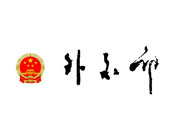


African Members of FOCAC
- Algeria
- Angola
- Benin
- Botswana
- Burkina Faso
- Burundi
- Cabo Verde
- Cameroon
- Central Africa
- Chad
- Comoros
- Congo
- Cote d'Ivoire
- Congo(Kinshasa)
- Djibouti
- Egypt
- Equatorial Guinea
- Eritrea
- Ethiopia
- Gabon
- Gambia
- Ghana
- Guinea
- Guinea-Bissau
- Kenya
- Lesotho
- Liberia
- Libya
- Madagascar
- Malawi
- Mali
- Mauritania
- Mauritius
- Morocco
- Mozambique
- Namibia
- Niger
- Nigeria
- Rwanda
- Sao Tome and Principe
- Senegal
- Seychelles
- Sierra Leone
- Somalia
- South Africa
- South Sudan
- Sudan
- Tanzania
- Togo
- Tunisia
- Uganda
- Zambia
- Zimbabwe
- The Commission of the African Union
South Sudan
(Updated March 2018)
【Official Name】Republic of South Sudan
【Area】About 620,000 km²
【Population】12.53 million. South Sudan is a country with multiple ethnic groups, including the Dinka, the Nuer, the Shilluk and the Bari. Most people in South Sudan have their indigenous religions. Approximately 18% inhabitants are Muslims and 17% Christians. The official language is English and the common language is Arabic.
【Capital】Juba with an estimated population of 500,000
【Head of State】Salva Kiir Mayardit is the first President since the independence of South Sudan in 2011.
【Holidays】 Peace Agreement Day (9 January); SPLA Day (19 May); Independence Day (9 July); Martyrs Day (30 July)
【Geography and Climate】South Sudan (4°N to 10°N) is a landlocked country in northeastern Africa. It is bounded on the east by Ethiopia, on the south by Kenya, Uganda, and the Democratic Republic of the Congo, on the west by the Central African Republic and on the north by Sudan. It is mostly mountainous or hilly along the eastern, southern and western borders while the central land are mainly argillaceous plains. Mount Kinyeti in the southern border is the highest peak in South Sudan, with an altitude of 3,187m. It has a tropical savanna climate with the rainy season (annual average temperature of 20 to 40℃) from May to October and the dry season (average temperatures of 30-50℃) from November to April.
【History】There is no recorded history of South Sudan until the 19th century. It is widely acknowledged that the Dinka, the Nuer, and the Shilluk moved into South Sudan in the 10th century. From 16th to 18th century, the Avande and Avuyaka people ruled in the region. In early 19th century, Egypt and Sudan invaded this region.Sudan was administered jointly by Egypt and Great Britain in 1899, and separated into two parts under the “divide and rule” policy in 1902. Before Sudan declared independence in 1955, a number of army troops led by Joseph Lagu mutinied and the first civil war in Sudan broke out. In January 2005, a treaty between the SPLA/SPLM and the Sudanese government led to the ending of the war. A referendum was held in 2011 to determine whether South Sudan should become an independent country, and 98.83% of the population voted for independence. On 9 July 2011, the Republic of South Sudan was founded.




